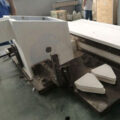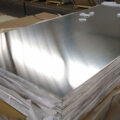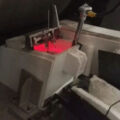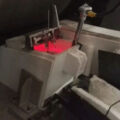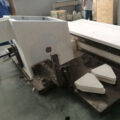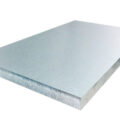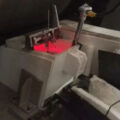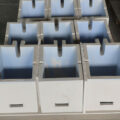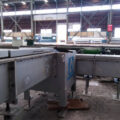The quality of cast-rolled aluminum strip is generally related to the processing accuracy, configuration, and quality of auxiliary materials of the equipment itself. It mainly depends on the grinding process of the cast roll, the size of the roll gap, the lubrication of the roll surface, the casting temperature (the temperature of the aluminum melt in the front box), the strength of water cooling, the height of the aluminum melt in the front box, the length of the casting zone and the casting rolling of process parameters such as speed.
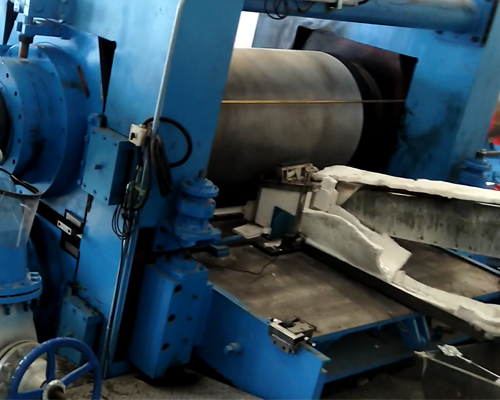
These process parameters influence each other. When a certain parameter changes, other parameters must be adjusted accordingly.
The relationship between the main process parameters of continuous casting and rolling can be adjusted and controlled according to the following principles:
1. When the pouring temperature is high, the casting-rolling speed should be reduced accordingly. On the contrary, when the pouring temperature is low, the casting-rolling speed should be increased appropriately. Because the lower casting-rolling temperature is beneficial to refine the product size and improve the overall performance of the cast-rolled aluminum strip billet, and the higher casting-rolling speed is beneficial to increase the output. Therefore, a reasonable process system should be lower casting temperature and higher casting speed.
2. When the liquid level of the aluminum melt in the headbox before feeding is low, the static pressure is low, and the fluidity of the aluminum melt in the nozzle cavity is small, so the casting speed should be reduced accordingly. On the contrary, when the aluminum melt level in the front box is high, the static pressure is high, and the aluminum melt in the nozzle cavity is fluid, so the casting speed should be increased accordingly.
3. As the length of the casting-rolling zone increases, the rolling zone becomes relatively smaller, and the circulating water takes away more heat, and the casting-rolling speed can be accelerated. On the contrary, if the length of the casting-rolling zone decreases, the rolling zone becomes relatively larger, and the heat taken away by the circulating water is less, and the casting-rolling speed is correspondingly slowed down.
4. When reducing the water inlet temperature and increasing the cooling water flow to increase the water cooling strength, the casting-rolling speed should be increased accordingly. Under normal circumstances, after setting the water temperature and water volume, do not adjust them during the casting and rolling process. It is best to keep it in a constant range to facilitate the adjustment of other process parameters.
According to the above-mentioned control principle and combined with field production practice experience, the main production process parameters of several typical alloys are preset. In the production process, minor adjustments are made according to the actual situation to reduce defects and produce excellent cast-rolled aluminum strips.


